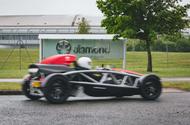Seeing the light: Atom arrives at Diamond Light Source in Oxfordshire
Ariel’s formula for lightweight simplicity has been honed ever finer in its latest track weapon. We go on a journey of scientific discovery
If Somerset’s farmers are worrying about the effects of drought and wanting rain for their crops, I’ve got a simple trick that’s guaranteed to summon grey, angry clouds over this part of the country: just arrange for me to drive an Ariel Atom and torrential storms will follow.
After weeks of beautiful weather, there was an inevitability that this long-arranged appointment with the Atom 4 would coincide with a Met Office amber warning for thunderstorms and floods. Tom Siebert, Ariel’s general manager, has seen it all before and, when I arrive at the Crewkerne factory to the distant rumble of thunder, his first question is: “Have you got waterproof trousers?”
Unlike many manufacturers of exotic machinery, Ariel has never been shy about letting its products get used in the real world. Company founder Simon Saunders has described the Atom as a four-wheeled motorcycle, and the approach to protection from the elements is similar. The car isn’t going to do much to keep wind or rain out, so weather-proofing is down to the user. By the time I leave the factory at Crewkerne, I’m wearing more layers than Bibendum’s cautious cousin.
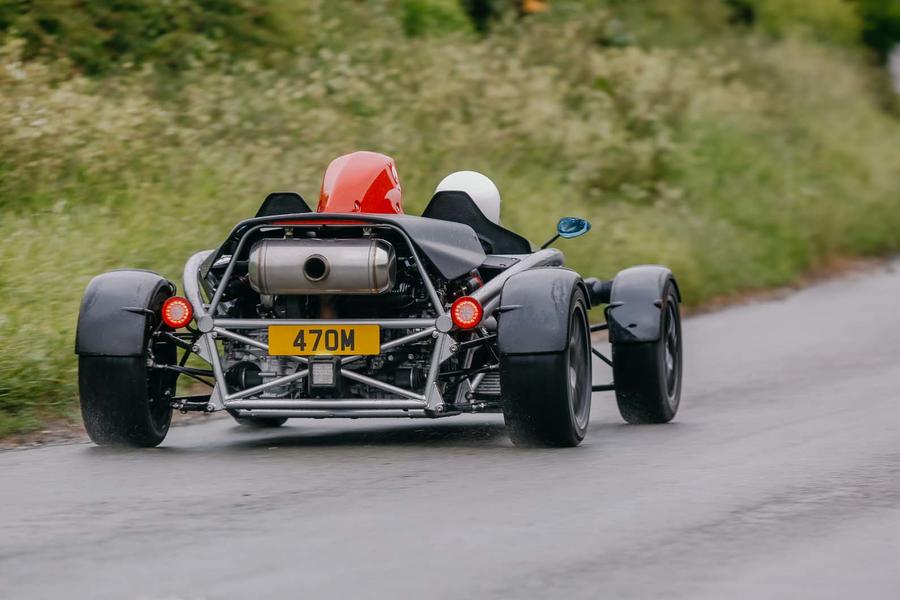
My destination is one chosen to celebrate not only the Atom’s light weight and Britishness but also the innovation that has seen the company succeed where so many other sports car makers have failed. We’re heading for the Diamond Light Source in Oxfordshire, the UK’s biggest synchrotron – a 560-metre-long ‘beamline’ that can generate very intense beams of light up to 10 billion times brighter than the sun. It’s not an atom-smasher like CERN’s Large Hadron Collider – that headline opportunity is denied us – but there is more than enough connection between speed and lightness to justify taking the Atom there.
But first the long schlep east. Pretty much every part of the Atom 4 is new; Ariel says only the clutch and brake pedals and the fuel filler cap have been carried over from the 3.5. But the experience on a wet road remains similar to that of its predecessors, and it is something my rain-summoning powers mean I have experienced plenty of times. The Atom’s minimal aero screen – a cut-out piece of plastic – is actually pretty good at deflecting wind and the front clamshell and denser component fit in the nose helps keep a surprising amount of rain out when travelling at a cruising speed. And while I’ve got an excellent view of both front wheels, their mudguards protect me from most of the water thrown up by the minimally treaded Avon tyres. The problem is other road users and, once on the A303, the 4’s skeletal structure does almost nothing to keep out the billowing clouds of spray thrown up by everything else. My waterproofs are beginning to leak well before passing the distant vista of Stonehenge.
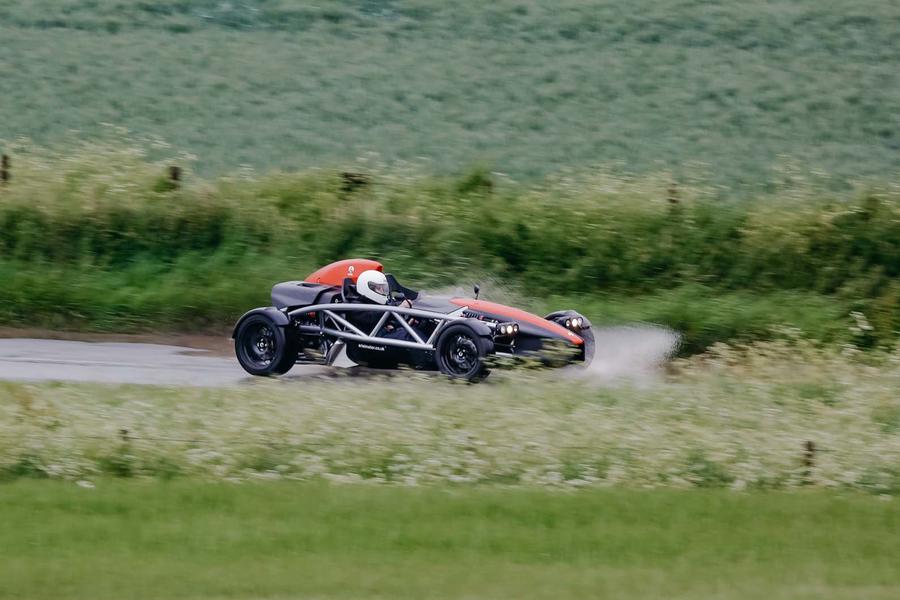
Yet I’m also having a masochistic form of fun within the stale embrace of my ancient Shoei helmet. The Atom’s sheer otherworldliness means it is always an experience, one of those performance cars that gives amusement even when travelling at a scant percentage of its towering abilities. The Honda Civic Type R engine has a whooshy, breathless soundtrack as the turbo cuts in and out, and with lots of torque and the Atom’s minimal weight, there’s rarely any need to be in anything other than sixth gear. Despite being nothing more than a plastic shell, the driver’s seat is also surprisingly comfortable even after a couple of hours on the road. There’s plenty of amusement to be had from the reactions of other road users as well – a stint behind a tourist coach on one of the A303’s single-carriageway sections sees dozens of smartphones being pressed against the steamed-up windows to take pictures of this example of British eccentricity. Once onto the A34 that will take me north to Harwell, the rain eases and the sky turns a slightly lighter shade of grey.
The Harwell Campus is quite possibly the brainiest place in the UK. Originally an RAF base (‘pathfinder’ paratroopers flew from here in towed gliders to land in France the night before D-Day), it was turned over to scientific use after the war. This is where the UK’s Atomic Energy Research Establishment was founded, where the UK’s – and Europe’s – first atomic reactors were built and also from where the Establishment’s head of theoretical physics, Klaus Fuchs, would pass on much of this pioneering information while working as a Soviet spy. Ross Brawn started his career as an apprentice at the Atomic Energy Authority here, using the skills he learned as a milling machinist for his first motorsport job at March Engineering in Bicester. The nuclear reactors have all been shut down, but the Campus is now home to numerous tech companies, the Rutherford Appleton Laboratory and the European Space Agency’s Space Applications and Telecommunications division.
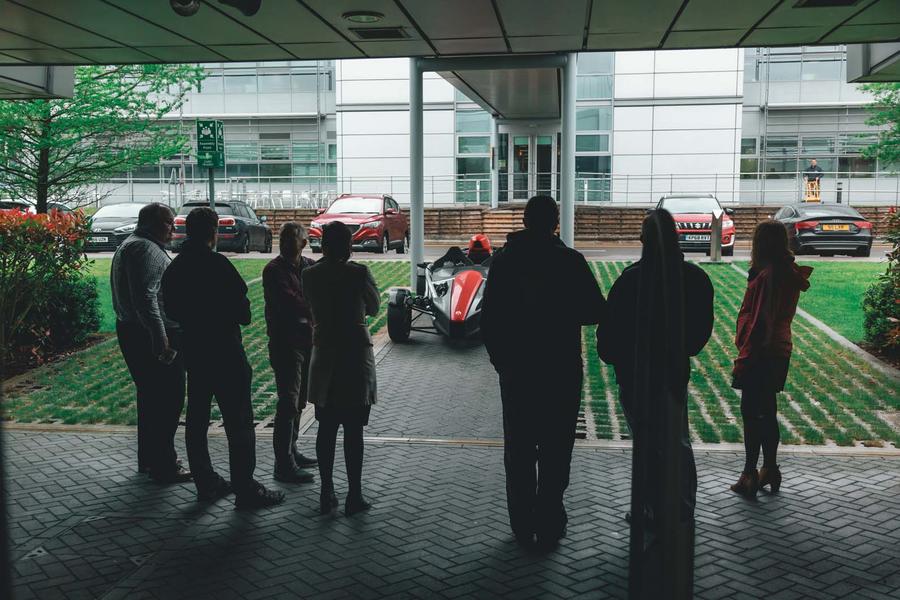
But it’s the Diamond Light Source that dominates the site and which brings us here. The first problem is obvious as the Atom grows close: short of booking some satellite overflight time, we’re not going to be able to get a vantage point that will do justice to the size of the place. Up close, the building that holds the synchrotron is obviously round, but there’s no way to get a ground-level perspective on more than a small part of it – it is 740 metres in circumference. Google Earth shows the true scale: a vast, silvery doughnut visible from space.
The Diamond Light Source was opened in 2007 and now employs about 900 people being used for scientific experiments around the world. I’m given a tour of the vast operating hall – mercifully warm – which gives a chance to see the beamline up close and to find out some more about what it does (see below). But the Atom is also turning out to be a draw by itself, parked outside under the shelter of an overhead walkway and soon drawing an appreciative crowd from the staff who work here. For the record, a 2.8sec 0-60mph time is brisk enough to impress even theoretical physicists. But after shunting around for photographs and a couple of low-speed laps of the support roads, it’s time to take the Atom somewhere better suited to its talents.
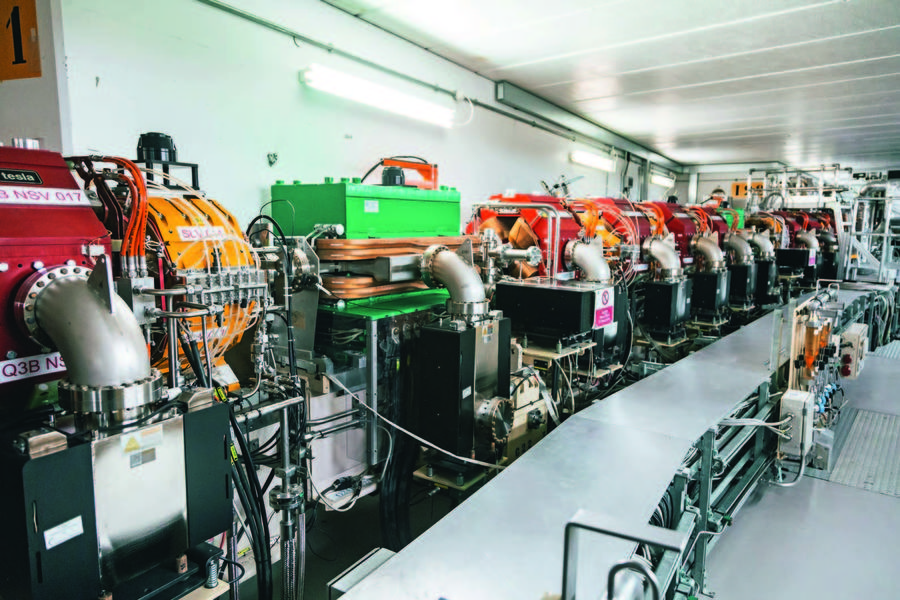
Harwell’s location on one corner of the Berkshire Downs means it is close to some of the finest driving roads that the south of England can offer, with an extended loop of the place – West Ilsley, Farnborough and then Wantage, before returning to the A34 – giving a chance for a more appropriate leg-stretch. There is still a lot of standing water, but the rain has eased to almost nothing.
While the Atom 4 is likely to feel most at home on a warm, dry race circuit, it is still remarkably accomplished on a slippery B-road dodging puddles. This car is the prototype and doesn’t have the traction control that will follow in the production versions (there is switchable boost control to allow the engine to be turned down) but, even running in the full 320bhp position ‘3’, it still manages to find impressive traction on the track-biased Avons, beyond a predictable level of low-speed squirming. Steering is spot on and the front end responds without the dartiness of earlier Atoms, while the rear axle grips more assuredly despite the meat of the engine’s mid-range torque. Trust builds quickly and, even at what is still a road-appropriate pace, it’s not long before change-up lights are starting to flare for the first time today.
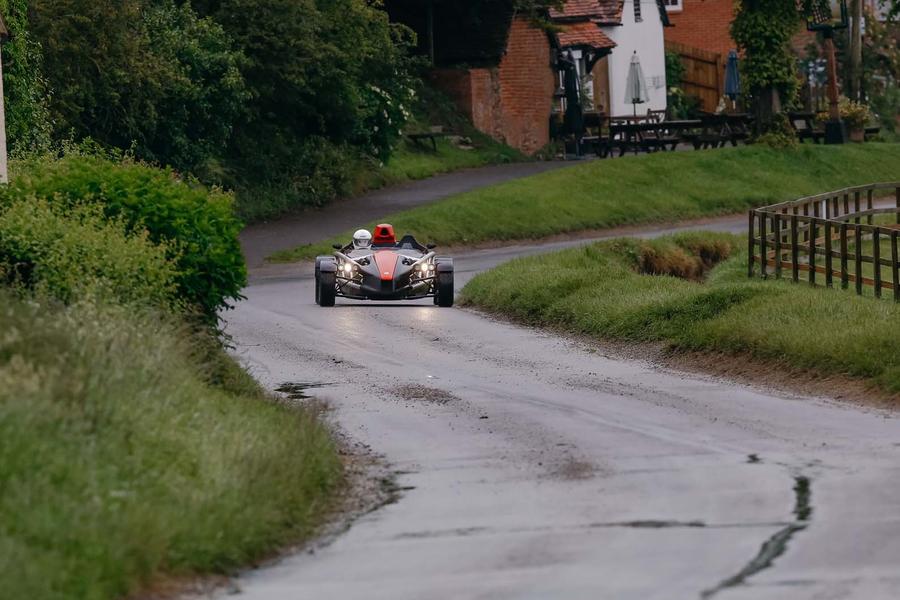
Braking still feels less assured in the sodden conditions – like a high-powered motorcycle, it can be easier to add speed in an Atom than to get rid of it, with some snatching over rougher surfaces and a quickly developed sense of the importance of slowing down in plenty of time for a corner. Yet the absence of ABS isn’t really an issue, with good enough pedal feel to mean that there’s little excuse for actually locking the front wheels. The manual gearchange feels beautiful and the stubby shifter from a Japanese-market Honda S660 suits the car perfectly. Despite the lack of rain, however, I’m not getting any drier thanks to the quantities of water thrown up by larger puddles. But I’m still grinning just as hard.
Small sports car companies tend to fail when they get too optimistic, when they base their figures on producing too many cars, or add too many expensive features to them. Ariel has always been different, with a minimalist ethos that informs everything the brand does, one which runs much deeper than the Atom’s bathtub shape. It doesn’t have a roof, or doors, or a heater or even, in most cases, a windscreen, because adding any of those things would increase complexity and cost and add mass. But it would also result in a car with less focus. The Atom’s lack of distraction has allowed Ariel to relentlessly develop every part of its experience. That’s why the gearchange feels better than that of the old Atom, the steering less frenetic, the turning circle tighter and the ride more pliant – incremental progress has been made pretty much across the board. Not having unnecessary stuff is Ariel’s guiding ethos, but so is improving the things it does have.
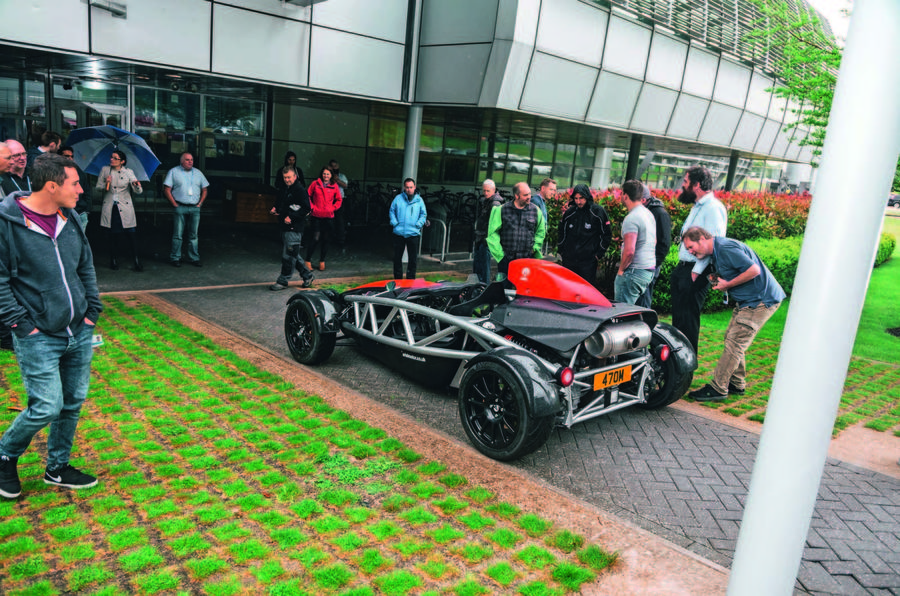
It starts raining soon after I begin the long return journey to Somerset. For the hour it comes down, I’d gladly swap the Atom for something with more weather protection – even a Caterham seems like a nice, snug prospect. But then it dries up and I leave the A303 early to take a more scenic route for the last bit to the factory. I return there with my faith fully restored and genuinely sorry to be handing it back, despite the soggy trousers.
What is a synchrotron?
The Diamond Light Source operates at the cutting edge of science and, when running at full power, it requires up to 6MW of electricity – about the same as a small town. It creates very intense light beams – ultraviolet, infrared and X-rays – which are used to study objects in microscopic detail that wouldn’t be possible with visual light.
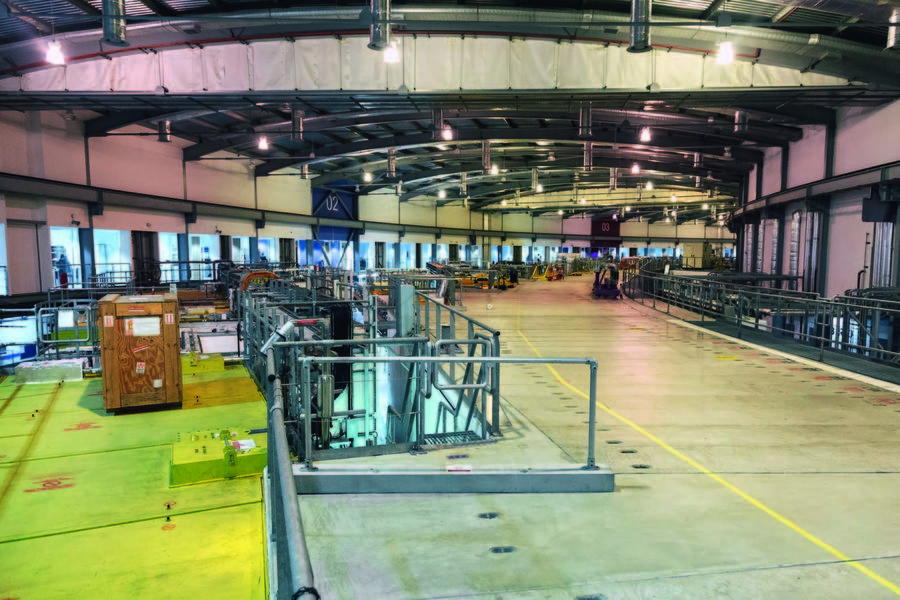
A 90keV electron gun then accelerates these to very high speed using a 100MeV linear accelerator – just below the speed of light. These are then sent into a high ‘storage ring’ – the vast circle that gives the DLS building its shape. Despite its name, this is actually a – wait for it – tetracontakaioctagon made up of 48 straight sections linked by 48 powerful bending magnets to steer the electrons. When the beam is bent, the electrons lose energy and create huge amounts of light, which is then directed into stations called beamlines where it can be focused and used for experiments. There are currently 33 beamlines, but work is under way to increase that to 40, with a long waiting list of academic and industry users wanting them for experiments.
Diamond has been used for extensive automotive research, including materials analysis for high-grade metals and examination of nano-coatings and fuel additives. Other recent uses include analysis of the cannonballs from the Mary Rose warship (they are degrading under what was meant to be a protective coating applied to them in the 1980s), and it will soon be working with some lunar rock samples that NASA’s Apollo programme brought back from the moon.
Read more
Top 10 best lightweights 2019
Source: Autocar
